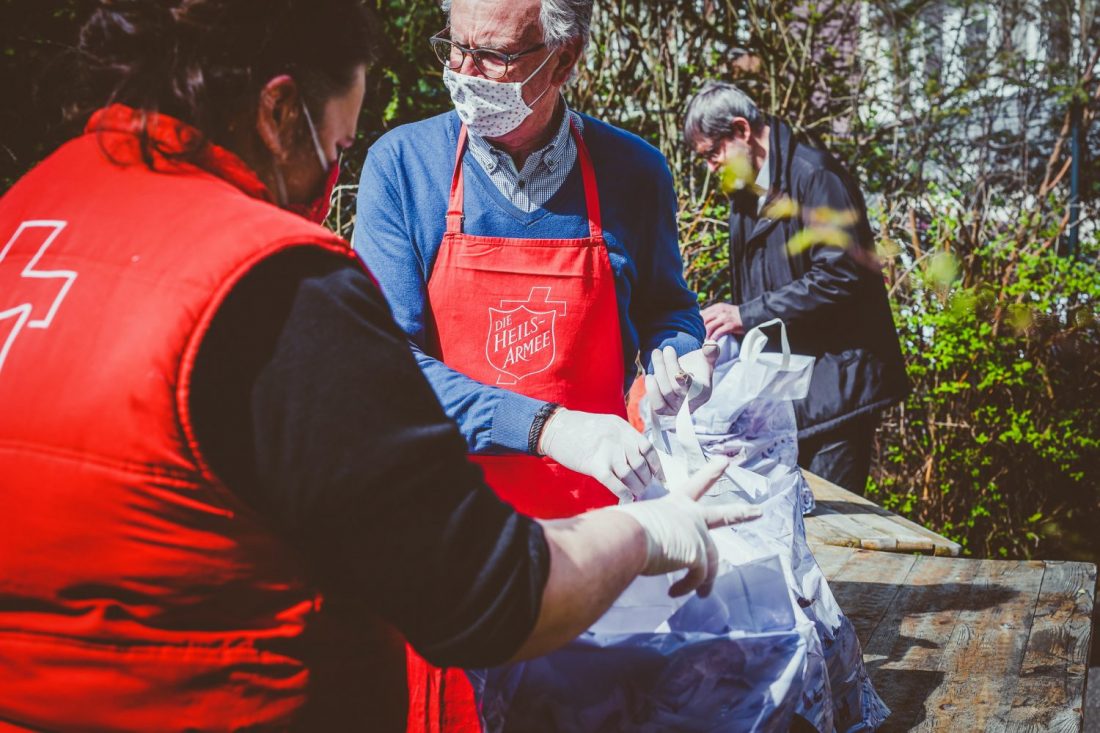What about the history of the site? The history of 101 after William Booth took the Army there in 1881 is well documented, but that is less true of the centuries before. However, the Army’s previous two redevelopments on the site afforded the opportunity to delve more deeply into the past, with archaeological digs conducted by London’s Guildhall Museum. An International Headquarters. A billiards hall. A victim of the Great Fire of London. An unfinished Roman temple … it’s surprising how far back one can go.
The needs of 101 Queen Victoria Street weren’t always so complicated. In his early preaching days, almost the only requirement of The Salvation Army’s Founder, William Booth, was a hired meeting hall. In fact his first meetings took place in the street. They then moved to a tent on a disused Quaker burial ground. In 1867 William Booth purchased a former public house, called the Eastern Star, turning it into the headquarters of the then East London Christian Mission. Two years later, following a change of name to The Christian Mission, he purchased the People’s Market at 272 Whitechapel Road for use as a place of worship, headquarters offices and a cheap food shop for the poor. Those premises were still the headquarters in 1878 when the final name change took place, to The Salvation Army.
By then, General Booth’s son Bramwell was his Chief of the Staff, and the two were aware of a need for more suitable and spacious accommodation. They came upon 101 by chance, while returning from a business call via the City of London’s Queen Victoria Street. Seeing signs advertising “These desirable premises to let,” Bramwell was struck immediately. “There’s our new headquarters!” he exclaimed. A quick ‘peep through the door’ confirmed things: this old billiards club had everything The Salvation Army needed. There was no time to waste.
General Booth knew exactly where to go: to T. A. Denny, via Whitechapel, where he gathered his staff and told them to pray about the matter. T. A. Denny was a generous benefactor, but even he outdid himself by offering to pay the first year’s rent. Success! The official date that 101 Queen Victoria Street became the headquarters of The Salvation Army was 8th September 1881, and The Salvation Army retains a copy of the original lease in its archives. However, no formal ceremony took place until two weeks later, when General Booth himself held a noon-day prayer meeting to give thanks to God for the provision. Ten years later, thanks to the generosity of a Scottish friend, Mrs. Elisabeth Orr Bell, The Salvation Army bought the freehold of the site. The cost? £70,000.
On 11th May 1941, during the Second World War blitz on London, a devastating air raid took place, and the subsequent fire destroyed the original 101 building. It would be 22 years until its successor was opened. First came the small matter of raising £1,125,000 to fund it. The reconstruction of the City had one outcome that directly affects this building, and that was the creation of a vista from St. Paul’s Cathedral to the river, cutting right through the blitzed areas of the site. International Headquarters was faced with having two wings, one either side of the walkway. This did not appeal to the Army, and an agreement was negotiated whereby the site for the new building was shifted eastwards, incorporating numbers 97 and 99.
In 1955 Messrs Lidbetter were appointed architects to design and supervise the construction of the new headquarters. Building work began in 1961, and in November 1963 the new 101 was opened by Her Majesty Queen Elizabeth, the Queen Mother. The building was shared by International Headquarters and United Kingdom Territory, each of whom was provided with its own entrance!
During the construction of the basement of ‘Lidbetter’s 101’ a graveyard was unearthed, apparently belonging to a church of St. Peter and St. Paul the Lesser, erected in the 12th century. The bones of the graveyard were exhumed and buried elsewhere. In both this and the current redevelopment of the site (and others nearby) archaeological excavations were carried out by the Guildhall Museum, revealing a sequence of building from the third century to the present time. The early building activity is from Roman times when the river was far wider, reaching right to the southern boundary of the present site. It included a break in the river wall with an associated jetty, suggesting that whatever these buildings were, they required access to ships on the river. Digs at the City of London School next door found huge foundations and courtyards, suggesting a very high-status building, an unfinished construction dating from around 294 AD. Historians have suggested that a man named Allectus rose to the position of self-declared emperor, began to construct the palace, and was cut short by some dramatic event, probably the recapturing of the British Isles by the Romans about 296 AD.
When The Salvation Army first moved to 101 Queen Victoria Street, in 1881, it took two trips in a fruiterer’s horse-drawn van and a handcart. Halfway to the new City offices one of the wheels fell off the handcart. Cadet William Whattam attempted to fix it, while his colleague, another cadet known as ‘Zulu George,’ held off the roughs by threatening them with the flagpole that formed part of the precious cargo. The rest of the journey was made on one wheel, with one perspiring cadet pushing and the other holding the handcart on the wheel-less side.
Now, of course, it is a vastly different world. Lorries and lifts take the strain. Things move at the touch of a button, messages cross the earth in the blink of an eye. But something of the spirit of those two young men remains at 101 Queen Victoria Street—something of their effort, determination and teamwork, their steadfast belief; qualities given strength by the love of God.
Perhaps today’s International Headquarters staff would do well on occasion to look through the transparent walls down to the street below, and think of that cart, arriving for the first time, and the spirit that drove it. Combined with today’s opportunities, who knows where that spirit will lead next?











